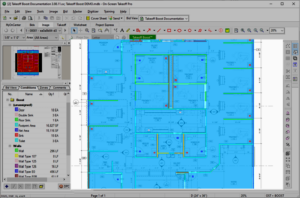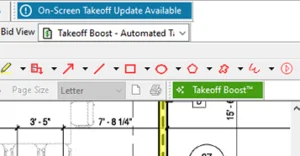If your company recently purchased new takeoff and estimating software, your next step is to choose the best type of training. Do you want to attend an in-person class, participate in online (virtual) training, leverage other “self-study” resources, or some combination of the three?
You’ll want to weigh a variety of factors. I may not be able to tell any estimator or project manager the exact option that is best for them, but I can offer an insider’s perspective on what to consider when determining the right fit based on personality, learning style, and schedule.
Pros and Cons of Live Training Class
In most cases, a live training class will put you in a neutral location since these classes are held offsite. Whether you’re in a hotel meeting room, a local computer lab, or the software company’s office, you’ll likely be away from your desk and all your daily distractions. This will help you improve your concentration and focus. On the other hand, escaping your desk can sometimes mean travel to and from the training site, which may involve additional time and cost.
Another factor to remember is that takeoff and estimating software classes are typically done in a group format, which can be advantageous as it provides an opportunity to hear new perspectives and even learn from others’ early experiences with the software. Conversely, since these classes tend to cover a lot of ground, group formats may be more challenging for anyone who prefers a more deliberate pace.
Also, keep in mind that this type of format allows you to network with other estimators, project managers, and construction-industry professionals during meals and built-in break times. (In fact, many of our customers report that is their favorite part of coming to one of our live training classes!) The face-to-face interaction shared with your peers and the class instructor can quickly build rapport and spark excitement for how the software can help you do faster takeoffs and produce more accurate estimates.
Virtual Training “Wow Moment”
A second option is to participate in some form of online training, which might be a webinar or a one-on-one private session with an instructor. Because these sessions are done virtually, they usually involve less time away from your regular responsibilities and may even fit into your schedule more easily since they don’t involve travel for you or the instructor. And with travel out of the picture, these sessions can sometimes be a more affordable option overall.
But since you’ll be at your desk, the possibility of other things competing for your attention during the training is something to consider. Seeing all your incoming emails and voicemails may divert your thoughts temporarily and cause you to miss some of the information being shared.
Although you won’t have the experience of face-to-face interaction with your instructor, it’s still possible to develop a rapport as you share some of your personal thoughts, including your reactions to the software’s capabilities. Some of the best virtual training I’ve done are when our takeoff and estimating customers have a “wow moment” and aren’t afraid to share it with me!
Opting for Independent Self-Study
A third possibility is some form of self-paced learning. This could include watching pre-produced online videos or reviewing web-based how-to guides about the software. This approach can be very beneficial for anyone who prefers to learn at their own pace and focus only on what’s relevant for their specific needs. In addition, since this material is typically found online, it can be accessed anywhere and anytime, which can facilitate learning when you have only so much time to devote to training each day.
The caveat to remember is that it does require a heavy dose of self-motivation and direction. But if you’re an estimator or project manager who isn’t afraid to set goals and deadlines for yourself – and have the inclination to stick to them – you may be able to develop quite a bit of foundational knowledge this way. From there, you can decide whether you might also want to connect with a trainer at some point for some Q&A or to address more complex functionality of the software.
Choosing the Right Training Fit
As you think through all the factors involved in making this decision, don’t forget the one that’s arguably most important. You should carefully consider which one of these methods will result in your ability to retain and leverage your new knowledge in the most impactful way. Ultimately, this will ensure the best ROI for your construction business to help you get the most out of your investment in takeoff and estimating software.
In other words, which method or combination will ensure that you can learn and then begin using your new takeoff and estimating software quickly and successfully? Not only will you get up and running without delay, but you’ll have the know-how to scale your skills as your business grows. The choice is yours.
As always, the only wrong approach is to avoid engaging in any sort of training at all.
Are you ready to see how much easier life can be with the industry’s leading takeoff tool? Request a demo now.



